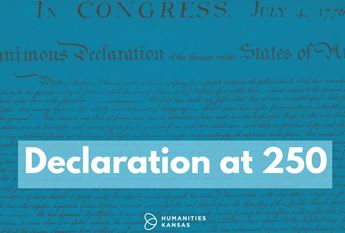Shared Stories of the Kansas Land Topics
Sodbusters and Rainmakers
If the rain did not fall, where would you find water? If your crops failed, would you start over and plant your fields again? In the 1860s, 70s, and 80s, homesteaders, immigrants, and freed men and women arrived in Kansas. They had to negotiate new ways of life in an unpredictable climate. Water could be plentiful or scarce.
Dry Kansas Washed Away
Dust storms. Drought. Hunger. Unemployment. During the "Dirty Thirties," Kansans faced a lack of jobs, money, and food to sustain themselves and their families. Although the dust storm persists as an iconic symbol, the story of the 1930s has much more to offer.
Of Mines and Men
Kansas's economy has thrived not just on farm crops. The extraction of coal, lead, zinc, oil, and other materials from the land led to community growth, new industries, and tremendous wealth. Kansans have lauded the state's development into "more than a breadbasket," but have had to take in stride the costs in labor discord and ultimately the cost to the land itself.
Dam the Rivers!
Water has the power to give life. It also has the power to destroy. The Great Flood of 1951 wreaked extensive damage across Kansas. In response, the government requested that Congress fund a dam on the Big Blue River for flood control. The proposal immediately sparked controversy.
Who Owns the Water?
In 1880, windmills and river diversion projects dotted the Kansas landscape, redirecting water to crops and homesteads. By the turn of the 20th century, legislators were already tackling water rights issues. Today, increased human use has posed threats to water resources, including underground aquifers, rivers and streams, and reservoirs.



